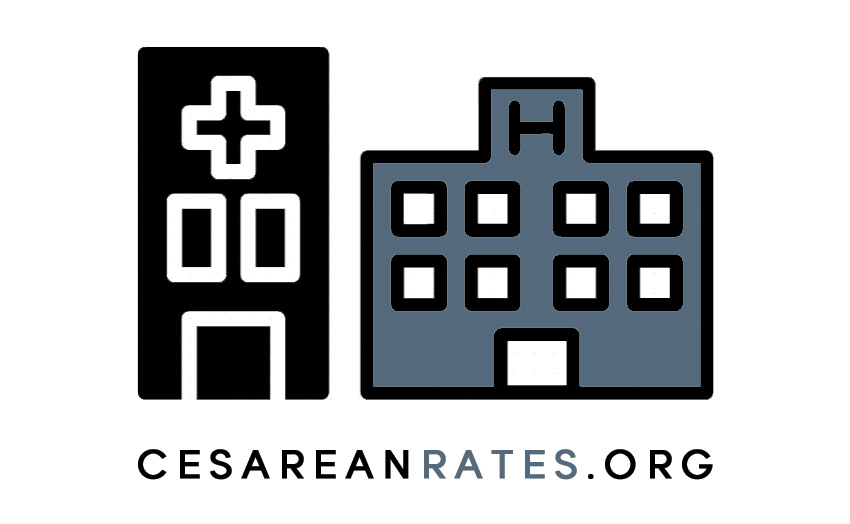California
NTSV Cesarean Birth Rate Dashboard: California
About this state dashboard
Centers for Disease Control and Prevention (CDC) National Center for Health Statistics provided a special report on state-level final data to CesareanRates.org. These include maternal morbidity cases, maternal conditions and characteristics of labor and delivery not currently accessible in CDC WONDER. Our organization is publishing these alongside national numbers to inform the public, policy makers, public health experts and the obstetric and midwifery community about state-level progress toward Healthy People 2020 goals for childbirth.
Maternal Morbidity, CA, 2016
All births: 488,827
Maternal transfusion: 815
3rd- or 4th-degree perineal laceration: 3,739
Ruptured uterus: 89
Unplanned hysterectomy: 168
Admission to intensive care unit: 547
Unknown: 57
Maternal Morbidity, U.S., 2016
All births: 3,945,875
Maternal transfusion: 11,494
3rd- or 4th-degree perineal laceration: 25,463
Ruptured uterus: 976
Unplanned hysterectomy: 1,342
Admission to intensive care unit: 5,003
Unknown: 5,362
More available on CDC WONDER, including data on age, race and other characteristics.
Mobile device users: Turn phone horizontal for best viewing of this page.
Characteristics of Labor and Delivery
Final Route of Delivery, CA
Final Route of Delivery, U.S.
Birth Attendant, CA
Birth Attendant, U.S.
VBAC v. Repeat Cesarean, CA
VBAC v. Repeat Cesarean, U.S.
Compare to other states:
Epidural/Spinal Utilization, CA
Epidural/Spinal Utilization, U.S.
Cesarean with Trial of Labor, CA
Cesarean with Trial of Labor, U.S.
Induction of Labor, CA
Induction of Labor, U.S.
Labor Augmentation, CA
Labor Augmentation, U.S.
Maternal Health Characteristics
History of a Prior C-section, CA
History of a Prior C-section, U.S.
Chronic Hypertension, CA
Chronic Hypertension, U.S.
Pregnancy-Associated Hypertension, CA
Pregnancy-Associated Hypertension, U.S.
Tobacco Use, CA
Tobacco Use, U.S.
Diabetes, CA
Diabetes, U.S.
Tools for Promoting Maternal Safety
Several organizations offer free quality improvement solutions online, including condition-specific toolkits and larger scale data collection and analysis protocols.
Hospital level:
Patient Safety Movement Foundation: Optimizing Obstetric Safety Actionable Patient Safety Solutions (APSS)
Council on Patient Safety in Women's Health Care: Maternal Safety Bundles
California Maternal Quality Care Collaborative: Toolkits and Maternal Data Center
State or regional level:
State Perinatal Quality Collaboratives
Maternal Mortality Review Committees: General information and standardization of data collection
California Hospital C-section and VBAC Rates
California is advanced compared to other states in the areas of the collection, publication and use of maternity data.
Cal Hospital Compare + Yelp
CalHospitalCompare.org (formerly CHART) has been renamed a few times over the years but has always featured up-to-date maternity data. One feature worthy of exploration and replication in other states: VBAC Policy reporting. The Hospital Quality Institute surveys all birthing hospitals in the state for a Yes/No as to whether VBAC is routinely made available at their hospital.
This information is on Yelp as a result of a partnership with California Health Care Foundation and adds the element of consumer reviews of facilities and satisfaction with their experiences. It is the only existing option for patients to receive up-to-date data and read reviews on the same page.
UCSF Birthing Center’s Yelp page selected as an example.
CMQCC’s Maternal Data Center
The California Maternal Data Center was launched in 2012 and sets the standard for robust, near real-time data collection. Two other states—Oregon and Washington—now have hospitals using the MDC.
For many performance measurement projects, people can get away with using what is called “administrative data,” or discharge data. However, some quality and performance metrics require that these data be linked with birth certificate and hospital records in order to understand more about the patient. All of this has to be completely deidentified in order to comply with HIPAA. The MDC devised a secure, HIPAA-compliant system of delivering rapid cycle data and near real-time feedback to hospitals for the purpose of helping them do quality improvement work.
California Office of Statewide Planning and Development
Hospital discharge data sets are publicly available to download for free. You can find aggregated data on AHRQ quality indicators conveniently available to download in Excel or as a PDF.

